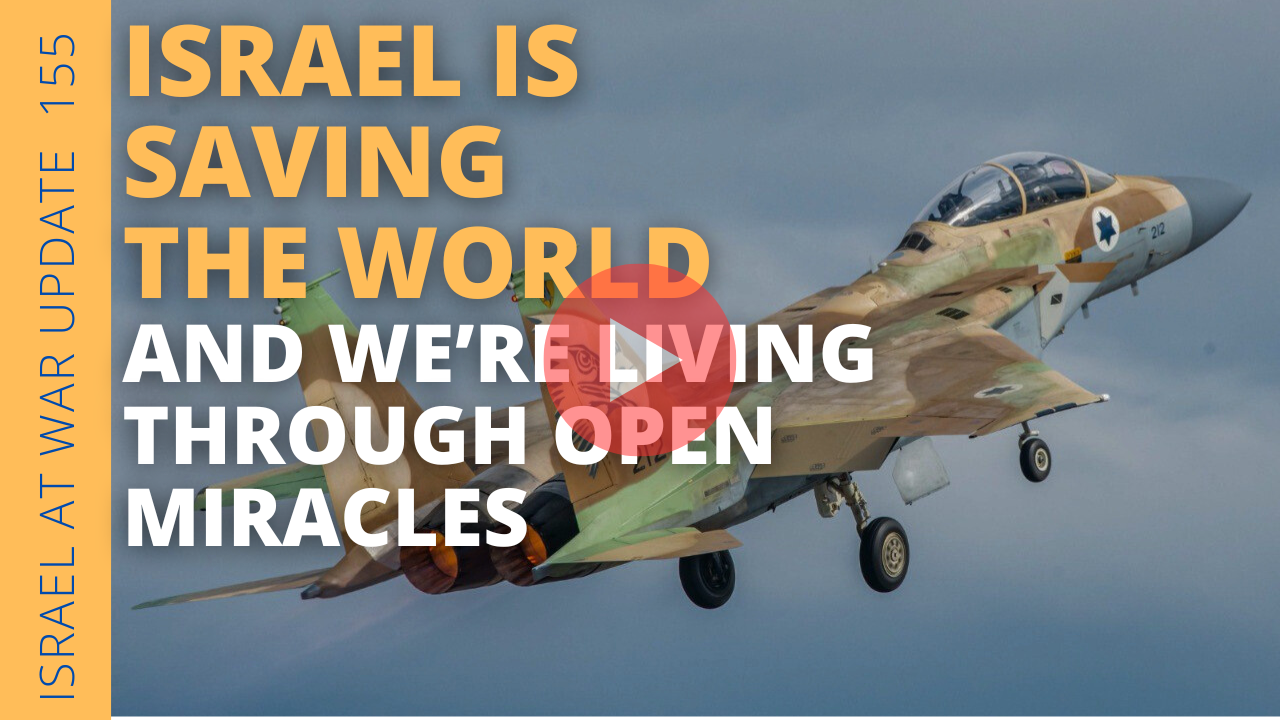Iran has massive gas reserves and much cheaper power than we do.
(May 12, 2025 / JNS)
Iran has some of the cheapest electricity prices in the world. The average cost of electricity in the United States per kilowatt hour is $0.181.
In Iran it’s $0.004.
A country where electricity is vastly cheaper than in America isn’t looking to lower power costs.
Iran joins Libya, Kuwait, Iraq, Oman, Qatar and other oil-rich countries as having some of the cheapest electricity prices in the world. Countries with vast energy reserves and production don’t need nuclear energy the way that Germany or France, which depend on imports, do.
Saudi Arabia, with $0.053 electricity, did not begin pursuing a nuclear program because it needed to lower its energy costs. Neither did the United Arab Emirates. The Saudis and Emiratis became interested in developing a “civilian” nuclear program only as Iran’s nuclear program took off.

If Iran were developing a nuclear program to lower energy costs, it would have long ago dropped the program after sanctions cost its economy an estimated $1 trillion. Losing $1 trillion to shave a few more fractions of a cent off the average cost of a kilowatt makes no sense.
Iran is not interested in peaceful applications of nuclear energy, but in nuclear weapons. That’s why it’s been willing to lose $1 trillion and go to war to protect its nuclear program.
Despite these obvious, common-sense facts, the Obama administration and some figures in the current administration insist on pretending that a deal can be made to keep Iran’s nuclear program peaceful. The idea is just as false in 2025 as it was in 2015 when Obama pushed his Iran deal.
Consider Iran’s Bushehr nuclear power plant. Under construction since the ’90s, its 1,000 megawatts is a drop in the bucket compared to the billions spent constructing it. (Iran has variously claimed to have spent either $1.7 billion or $4 billion on the plant.)
One of the world’s largest energy producers would not be going to war to add 1,000 megawatts.
Despite Bushehr and the rest of Iran’s extensive and growing nuclear infrastructure, Iran gets only 1% of its electricity from nuclear power. Iran gets most of its actual electricity (86%) from natural gas. And Iran’s natural gas cost is $0.001 per kWh for residential customers (vs $0.081 on average in the world).
With 1.2 trillion cubic feet of natural gas, one of the biggest reserves in the world, Iran has all
the energy it needs under its feet. Even without adding the $1 trillion cost of sanctions, the numbers for using nuclear power plants to generate electricity for homes and businesses make no economic sense.
Over 95% of Iranian households depend on gas. And Iran has so much power that it exports electricity to nearby Iraq. Despite putting on a facade of power and gas shortages to justify its nuclear-power program, that’s not because Iran doesn’t have enough gas but because it prioritizes exports over its domestic market, and uses the revenues for international terrorism.
Iran is the world’s third largest natural gas producer after America and Russia. Where does that money go? It certainly doesn’t go to the Iranian population, which gets little to no say in it.
Iran’s trillions of cubic feet of natural gas produced each year also help finance its extremely expensive and devastating nuclear program. Is Iran planning to spend another $20 billion building nuclear plants (in an economy with a GDP of only $404 billion) because it wants to make sure that its civilian population and businesses have everything that they need?
If Iran really cared about the welfare and prosperity of its civilian population, it would have stopped its nuclear program and ended the international sanctions imposed on it, which have hit its consumer goods and business exports and imports hardest while doing less to stop the core energy exports and construction businesses that the regime derives much of its wealth from.
When Trump reimposed sanctions on Iran over its nuclear program, ballistic missiles and terrorism, its GDP growth fell from as high as 8.8% after the Obama deal to 2.4%.
Was adding some megawatts to the grid in a country powered by its gas reserves worth that?
Iran is not pursuing a nuclear program because it needs the electric power, because it makes any economic sense or because it cares about its civilian population.
No one in the Middle East is building nuclear power plants because they want a civilian nuclear industry. And certainly not countries that can get all the energy they want just by drilling.
Those who oppose any crackdown on Iran’s nuclear program should be honest and say so rather than promoting the Obama fiction that one of the world’s largest energy producers with dirt-cheap electricity lost $1 trillion to be able to slightly boost its electric generation capacity.
Iran is not building its Natanz uranium enrichment complex so far in the earth that it’s supposed to be unreachable by U.S. strikes because it wants a civilian nuclear program. And that much is obvious to everyone. But there are those who still insist on an imaginary separation between Bushehr and Natanz, between Iran’s supposedly civilian and military nuclear program, and using that as the basis for a deal limiting Iran’s capacity to civilian uses.
But all of that is premised on the idea that Iran wants a civilian program and would therefore accept and honor an arrangement that would limit it to a civilian program with no possibility of weapons development. That premise, which Obama accepted and sold to Congressional Democrats, quickly fell apart, only for Trump’s special envoy Steve Witkoff and other administration players to try and revive it.
Iran isn’t looking to trade a weapons program for a civilian program. It’s doing what it has done from the very beginning, which is disguising its military program as a civilian program. Obama, like a number of figures in political office and in the intelligence community, knew that and chose to pretend otherwise. They are the reason why Iran has become a bigger threat over the years.
Defenders of rebooting Obama’s Iran deal have taken to calling critics “globalists” and claim that bringing back Obama’s old policy is somehow “America First.” They insist that being realistic about Iran’s nuclear program is a plot by the military-industrial complex and the CIA.
But it was the CIA and the “intelligence community” that bailed out Iran during the Bush administration by falsely declaring in the 2007 National Intelligence Estimate that “we judge with high confidence that in fall 2003, Tehran halted its nuclear weapons program.”
The Trump administration can do what it chooses about Iran’s nuclear program. It can maintain sanctions, it can take out the program or it can do absolutely nothing. But it should be clear-eyed about what Iran’s nuclear program is and what it’s for. Deals with terrorists and terror states are worthless. Any agreement with Iran can only end one way, and that’s with a terror state whose motto is “Death to America” gaining the ability to carry out that threat against us.
Iran’s civilian nuclear program is as much of a front as a mob chain of pizza parlors. Negotiating with Islamic terrorists is a waste of America’s power and credibility. And it seduces those who negotiate into believing that a deal is possible, no matter how high the red flags fly.
The United States can choose to ignore Iran, but it should stop humiliating itself by negotiating with a terror state that has tortured and murdered Americans, and now treats us like suckers.

 Whatsapp
Whatsapp




